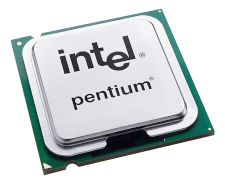x86
x86 is the name of Intel's family of processors and the instruction set architecture that they share. It has been the most popular processor architecture since the 1980s, powering most personal computers running Microsoft Windows and servers running Unix and Linux. The x86 family has previously included 16-bit and 32-bit processors, and the most recent incarnation of the instruction set is known as x86-64 since it now supports 64-bit processors.
The x86 architecture uses a complex instruction set (CISC) that has evolved over time. Extensions to the instruction set provide new capabilities while maintaining backward compatibility, allowing new processors to run software written and compiled for previous generations. This stability helped maintain its dominance in the personal computer market, as users could continue to use the same programs on new computers.
The x86 series began with the original 16-bit 8086 and 8088 CPUs, followed by later processors like the 80186, 80286, 80386, and 80486. The x86 name comes from the final three digits of the product number, with the x indicating the number that increments each generation. Even though Intel switched from using product numbers to using names like Pentium, Core, and Xeon, their processors continue to use the x86 instruction set. Intel and AMD are the primary manufacturers of x86 CPUs.
 Test Your Knowledge
Test Your Knowledge